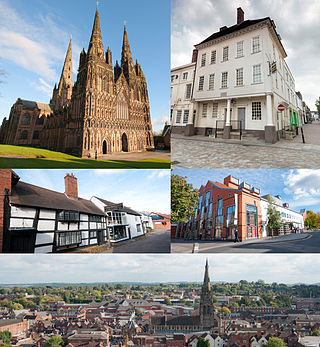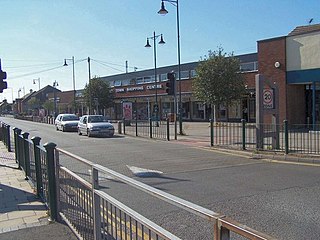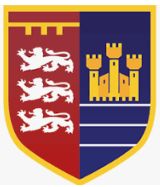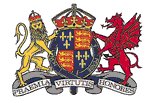
Lichfield is a cathedral city and civil parish in Staffordshire, England. Lichfield is situated 18 miles (29 km) south-east of Stafford, 9 miles (14 km) north-east of Walsall, 8 miles (13 km) north-west of Tamworth and 13 miles (21 km) south-west of Burton Upon Trent. At the time of the 2021 Census, the population was 34,738 and the population of the wider Lichfield District was 106,400.

David Garrick was an English actor, playwright, theatre manager and producer who influenced nearly all aspects of European theatrical practice throughout the 18th century, and was a pupil and friend of Samuel Johnson. He appeared in several amateur theatricals, and with his appearance in the title role of Shakespeare's Richard III, audiences and managers began to take notice.

Burntwood is a former mining town and civil parish in the Lichfield District in Staffordshire, England, approximately 4 miles (6 km) west of Lichfield and north east of Brownhills. The town had a population of 26,049 and forms part of Lichfield district. The town forms one of the largest urbanised parishes in England. Samuel Johnson opened an academy in nearby Edial in 1736. The town is home to the smallest park in the UK, Prince's Park, which is located next to Christ Church on the junction of Farewell Lane and Church Road. The town expanded in the nineteenth century around the coal mining industry.

Lichfield District is a local government district in Staffordshire, England. The district is named after its largest settlement, the city of Lichfield, which is where the district council is based. The district also contains the towns of Burntwood and Fazeley, along with numerous villages and surrounding rural areas, including part of Cannock Chase, a designated Area of Outstanding Natural Beauty.

Bedford School is a 7–18 boys public school in the county town of Bedford in England. Founded in 1552, it is the oldest of four independent schools in Bedford run by the Harpur Trust. Bedford School is one of the oldest boys' schools in the United Kingdom, and was the winner of the Independent Boys School of the Year Award at the Independent Schools of the Year Awards in 2021.

The Royal Grammar School, Guildford, also known as the RGS, is a selective private day school for boys in Guildford, Surrey in England. The school dates its founding to the death of Robert Beckingham in 1509 who left provision in his will to 'make a free scole at the Towne of Guldford'; in 1512 a governing body was set up to form the school. The school moved to the present site in the upper High Street after the granting of a royal charter from King Edward VI in 1552. Around that time, its pupils were playing cricket and their activity was later documented as the earliest definite reference to the sport. The school's Old Building, constructed between 1557 and 1586, is the home of a rare example of a chained library. It was established on the death of John Parkhurst, Bishop of Norwich, in 1575. Although defined as a 'free' school, the first statutes of governance, approved in 1608, saw the introduction of school fees, at the rate of 4 shillings per annum, along with the school's first admissions test. During the late 19th century the school ran into financial difficulty, which nearly resulted in its closure. A number of rescue options were explored, including amalgamation with Archbishop Abbott's School. Funds were eventually raised, however, which allowed the school to remain open, although boarding was no longer offered.

King Edward's Witley is a private co-educational boarding and day school, founded in 1553 by King Edward VI and Nicholas Ridley, Bishop of London and Westminster, in The Palace of Bridewell near Fleet St in the City of London. The School is located in the village of Wormley, Surrey, England, having moved to its present location in 1867. The School became fully co-educational in 1952. As of September 2010, the school has joined the small number of independent schools in the UK which offer the IB Diploma Programme in place of A-Levels in the sixth form. The school re-introduced A-levels as part of the curriculum from September 2015.

Derby School was a school in Derby in the English Midlands from 1160 to 1989. It had an almost continuous history of education of over eight centuries. For most of that time it was a grammar school for boys. The school became co-educational and comprehensive in 1972 and was closed in 1989. In 1994 a new independent school called Derby Grammar School for boys was founded.
King Edward VI High School is a coeducational secondary school and sixth form located in the Highfields area of Stafford, England. The school's sixth form forms part of the Stafford Collegiate. It is a non-selective state school admitting boys and girls from ages 11–18. The school was formed in 1977 following the amalgamation of King Edward VI Boys’ Grammar School and Stafford Girls’ High School.

Maple Hayes is late 18th century manor house, now occupied by a special needs school, near Lichfield, Staffordshire. It is a Grade II listed building.
The Friary School is a mixed secondary school and sixth form located in Lichfield, Staffordshire, England. The school became an arts and sports college in 2006 and despite this status being withdrawn by the DofE in 2010 the subjects remain high-profile in the school and local community.

William Budworth was a schoolmaster at Brewood in Staffordshire, England. He taught several notable pupils, but he is most remembered for not employing Samuel Johnson as an assistant at Brewood Grammar School.
Retford Oaks Academy is a coeducational secondary school and sixth form located in the market town of Retford, Nottinghamshire, England, situated in the district of Bassetlaw.

Samuel Johnson was an English author born in Lichfield, Staffordshire. He was a sickly infant who early on began to exhibit the tics that would influence how people viewed him in his later years. From childhood he displayed great intelligence and an eagerness for learning, but his early years were dominated by his family's financial strain and his efforts to establish himself as a school teacher.
Theophilus Levett (1693–1746) was an attorney and early town clerk of Lichfield, Staffordshire, a prominent Staffordshire politician and landowner, and a member of a thriving Lichfield social and intellectual circle which included his friends Samuel Johnson, the physician Erasmus Darwin, the writer Anna Seward and the actor David Garrick, among others.

The King's School is a coeducational secondary school with academy status, located in Pontefract, West Yorkshire, England. It is one of the four oldest schools in Yorkshire, dating from 1139 and was refounded by King Edward VI in 1548.

Norwich School is a selective private day school in the close of Norwich Cathedral, Norwich. Among the oldest schools in the United Kingdom, it has a traceable history to 1096 as an episcopal grammar school established by Herbert de Losinga, first Bishop of Norwich. In the 16th century the school came under the control of the city of Norwich and moved to Blackfriars' Hall following a successful petition to Henry VIII. The school was refounded in 1547 in a royal charter granted by Edward VI and moved to its current site beside the cathedral in 1551. In the 19th century it became independent of the city and its classical curriculum was broadened in response to the declining demand for classical education following the Industrial Revolution.
Lichfield Cathedral School is a private day school in the city of Lichfield, Staffordshire, England. It traces its lineage to the 14th century when Lichfield Cathedral made provisions to educate its choristers. The school in its current form now educates over 400 boys and girls from nursery to sixth form. While the school still serves its primary purpose of educating choristers of the cathedral, it is open to pupils of all faiths.













